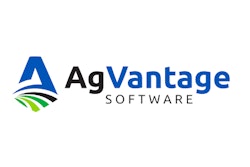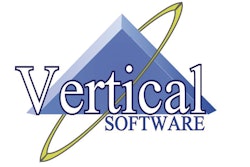
Feed and grain facilities boast a complicated accounting system. They buy from the farmer, then sell back to the farmer. It’s a cycle that revolves continuously but branches off in a variety of specialized business areas. This is where software advances have made a huge impact on streamlining and simplifying things.
Michelle Blomberg, president and chief executive officer at AgVantage Software Inc., Rochester, MN, says when her business began 40 years ago, basic accounting was the norm. Financial statements, payroll and accounts payable/receivable was it.
“Soon after, the need for grain accounting systems came along, which are completely unique to normal accounting standards and procedures,” Blomberg explains. “This is almost like the opposite of accounting. Your customer is bringing you the product, but on the flip side, you’re selling them agronomy.”
Blomberg explains that this synchronization of data is what allows efficiencies to be found in many areas of a feed or grain business.
“Million and even billion-dollar co-ops are able to run software on every single facet — fuel trucks, applicators in the field, trucks driving across a scale and systems for farmers to look up their information are now parts of the accounting system,” she explains.
Keeping all of that straight, along with seed, fuel, feed, etc., is no easy task. There are software solutions available today, however, that make this not just possible, but integrate and streamline the data for all departments.
“We understand the reality of sustainable software. You can never stop enhancing and creating new and better solutions,” says Shelley Laracuente, vice president/owner, AgVision, Ankeny, IA, whose company began in 1976.
Chuck Jenkins, director of sales and marketing for AgTrax Technologies, Hutchingson, KS, agrees. He says with a large cooperative customer base, the company had to diversify its approach when the grain cooperative market began to shrink.
“Today, a large operation has multiple departments — feed, fuel, agronomy and grain — each with a manager and other personnel looking for a specific software solution,” Jenkins explains.
Mike Terning, head of product for Greenstone, Alpharetta, GA, says the need for sophisticated accounting software is found in the growing size of facilities, but also their physically-wide geographical customer base.
“Data is really important,” Terning says. “We think the customers are king, but understandable data is important in making the customer feel like a king. It’s so important to be able to integrate information with other systems and have the flexibility to get that out in a usable manner.”
Creating efficiency
Efficiency is the name of the game. Trucks need to get in and out of the facilities fast, and back on the road. Pat Gilroy, president at Vertical Software Inc., Batonville, IL, says while personal relationships are important, it’s a fact that during harvest, trucks need to be moved.
Various software companies are using radio-frequency identification (RFID) technology to identify trucks and allow drivers to weigh in without even leaving the truck.
“The driver can select who he’s hauling for today, then accept his weight and proceed into the plant,” Gilroy explains. “When he leaves, he can also accept his tare weight and the system will generate his scale ticket.”
Electronic Data Interchange (EDI) is moving into a bigger realm in the grain industry. By downloading transactions for terminal receipts, the shipping company can process destination weights and grades without rekeying transactions. It reduces labor, which is a plus for any facility having a hard time finding qualified personnel, something Gilroy says is a real challenge nationwide. The information collected at the terminal is automatically driven into the accounting software, and available on demand for customers, grain terminals and shippers alike. This synchronization of data is what allows efficiencies to be found in many areas of a feed or grain business.
If a farmer pre-paid fuel, then the bill he receives during a stop by the company, will reflect that, without any other calculations at the office. The same fuel truck driver can synchronize his day’s tickets to the accounting system with an internet connection at a refueling station then pull the next batch of deliveries.
“If a customer needs a scale software system to send feed ingredient and grain delivery scale information to a third-party automation software” Laracuente says. “An integration module allows the accounting, commodity and other software programs to efficiently communicate and track products for feed production.”
Jenkins agrees that sometimes the one-stop approach isn’t always the best fit, and so instead of offering the agronomy software or the nutrition software, the technology provides the digital architecture which connects them all to the accounting program.
“We’re a building full of ex-auditors, ex-accountants that understand accounting,” he explains. “The technology in each of those departmental categories is moving so rapidly for us to try and keep up. The folks in those vertical spaces are aware of what’s coming, can react quicker, write the changes into theirs and send it to ours.”
This has made integration a true reality for customers, providing seamless, no-human interaction between the multiple programs.
Mobile is the new normal
A common trait of successful agribusinesses is they continually want to do more with their information. First, they want to share and leverage it internally as much as possible, and second, they want to extend their data’s external reach.
“Agribusinesses don’t want to make sales staff, agronomist, grain procurement staff, warehouse personnel, etc., tethered to a desktop computer or even a laptop,” Terning says.
All these accounting software experts say mobile is the new normal. Online customer portals, automation capabilities at the scales and mobile apps, those are scratching the surface of accounting software capabilities through mobile data.
It’s normal today to capture deals and transactions, but then how is it beneficial to the customer? They can use a grain trading tool to help manage risk positions, or move to different field if the grain delivery to the elevator was too wet.
“Mobile apps are providing that opportunity to customers by making information available immediately,” Jenkins says. “They also allow farmers to send in direct orders for things.”
Blomberg offers the example of their fuel accounting software, which runs through a mobile application in the laptop of a truck, connected to a meter. Then, she says, the person spreading fertilizer can also track their tickets and deliveries via a tablet inside the applicator, and even still, RFID technology to scan a truck at a scale site.
“By the time the truck is pulled on the scale, the message board can populate all the necessary information we already know about them and confirm that with the driver, all without anyone getting in or out of their truck,” Blomberg says.
Cultivating connections
The mobile abilities of accounting software is an important resource in strengthening customer relationships for feed and grain operators, especially as there continues to be fewer customers (who are growing in footprint).
“Our customers want to meet the needs of growing farmers and improve the experience farmers are having with the agribusiness,” Terning says.
Jenkins says this is where his business can offer the collaborative effort feed and grain operators desire. He says traceability to follow commodities throughout the facility is important to maintain strong connections with all sectors of the industry.
“No matter where it comes from, we can track all the financial components,” Jenkins says.
Gilroy says that integration with big data for farmers is a big feature right now. Vertical Software is exporting data in near real time to Granular, Conservis and FBS systems. Farmers want this data into their online systems as soon as they have harvested a field.
Meeting standards
Many customers are audited periodically by the U.S. Food and Drug Administration (FDA), as well as federal and state warehouse bureaus.
“Customers are able to produce the information they need from accounting software to comply with regulations and record-keeping requirements,” Laracuente says.
She says that having the accounting, feed and grain all in one software family gives customers more control of their data, better accuracy and timely information. At first, the company offered a hosted software and data service, but now offers a customer hosted client/server network as well.
Gilroy says a big challenge for feed and grain operators today is the Food Safety Modernization Act (FSMA) requirements regarding contaminated loads, and there’s already a solution. At an outdoor kiosk, an RFID tag will identify a truck, ask him what he hauled previously and proceed from there. If it’s a contaminated vehicle, and the truck wasn’t cleaned, the driver won’t be able to dump there. The driver must sign to confirm his truck is clean, and all these documents are saved in the transactional software with that load’s information.
“An operator can open up that scale ticket at any future time and see the FSMA documents or bill of ladings that were captured and saved with the transaction,” Gilroy explains. “This will be very useful during any type of audit. The management team is able to view five-year historical profit and loss statements and balance sheets.”
This capability makes it easy to spot business trends, such as where expenses may be going up and how underlying transactions affect the bottom line. Drill down allows the operator to view the transactions that support the totals on the balance sheet or profit and loss statements.
This data is also useful to give farmers a leg up on Farm Service Agency (FSA) requirements. Gilroy explains the agency now wants seven and eight-year historical totals for a field, to validate any insurance claims.
“We have that kind of data available if they are using our system for that length of time,” he adds. “It’s huge, and something farmers want access to all the time.”
Onboarding the crew
Bigger but fewer grain and feed facilities means more employees to manage, as well as transition and train on software systems. Add to that a multitude of products and services offered to a customer, and an operator can be facing a bigger challenge then what software to get in the first place.
“Managing all of those technologies in the data stream requires a lot of skill and talent,” says Terning. “It’s always changing.”
Loss prevention is a huge focus for agribusiness, and part of this is training staff to see changes in the information.
Blomberg says eTraining is popular and each month, clients can log online to join a variety of sessions. It’s a challenge to make sure everyone is getting trained and staying current with the latest accounting software enhancements, especially when hundreds of people at a single co-op are using the programs daily.
“We used to know every single person using the software because they were always in the back office,” she says. “Today, with the sizes of ag businesses, we don’t know everyone using the system, and they don’t know us. We rely on the business itself to push the training out to the people and make sure they are learning.”
Secure systems
“As companies grow wider, and deeper, they need to have secure systems,” Terning says, adding it’s not unusual for his customers to receive threats regularly from third parties trying to access services and data. “IT managers need to be very savvy with anti-phishing and anti-virus technologies.”
Having back-up, secured servers is essential.
“If our server went down, that’s about 10,000 people without a system, so we must make sure it doesn’t,” Blomberg adds.
Another facet of this is protecting data for customers, falling into another system that wants their data for other purposes.
“It’s become such a hot topic over these past few years,” Blomberg says. “In the past we were a software company known for accounting. Now part of our job is to make sure their data is safe and secure, and following compliance rules throughout the system.”
While securing systems is a challenge, it’s the way things are today. Fraud and theft are real threats, and accounting software providers are stepping up to the task, confidently.
It’s a trend that is building each year as more advancements continue to be made in software, interoperability, integration of data and mobile applications.
The basic need of financial records, through accounting software, is still balancing books and providing reports, but now it can do so much more.


















